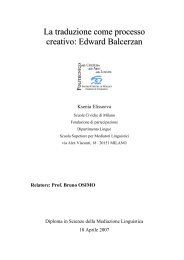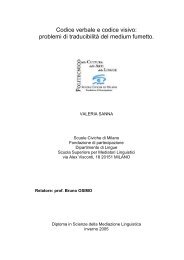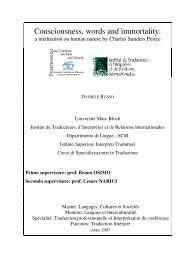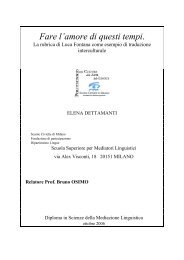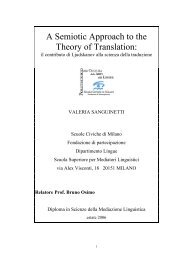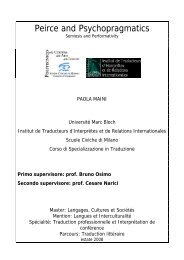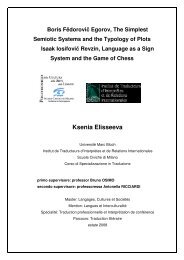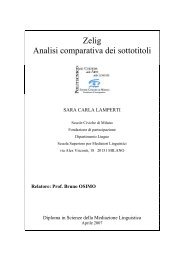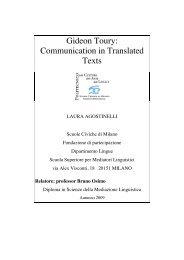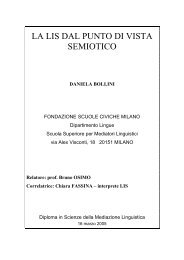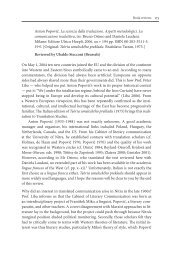Relatore: Professor Bruno OSIMO - Bruno Osimo, traduzioni ...
Relatore: Professor Bruno OSIMO - Bruno Osimo, traduzioni ...
Relatore: Professor Bruno OSIMO - Bruno Osimo, traduzioni ...
You also want an ePaper? Increase the reach of your titles
YUMPU automatically turns print PDFs into web optimized ePapers that Google loves.
-- in performing a role the individual must see to it that the<br />
impressions of him that are conveyed in the situation are compatible<br />
with [the] role-appropriate personal qualities effectively imputed to<br />
him: a judge is supposed to be deliberate and sober; a pilot, in a cockpit,<br />
to be cool; a book-keeper to be accurate and neat doing his work. These<br />
personal qualities, -- provide a basis of self-image for the incumbent and<br />
a basis for the image that his role others 9 .<br />
In terms of role theory the subjects in the present study were faced with<br />
different situations, the professional translators were acting in their familiar<br />
role of a ‘translator’ which, presumably, forms a part of their self-image. The<br />
non-professional translators, in turn, were asked to act in an unfamiliar role.<br />
As a result, there were two kinds of constraints operating within the<br />
experimental group. For the professional translators the experimental<br />
situation is potentially face-threatening, because it entails exposing a part of<br />
their ‘self’ to outside observation. The non-professionals, in turn, may have<br />
found the situation threatening because they were asked to perform a role<br />
which was outside their competence. Instead, as adults they possessed other<br />
roles by which they wished to be defined.<br />
To describe actual role performances of individuals (instead of typical<br />
roles on the basis of observing groups of people), Goffman introduces a<br />
number of new role concepts (1961: 95ff.), of which the notions of ‘role<br />
distance’ and ‘attachment to a role’ seem to have direct relevance to explaining<br />
the subjects’ behaviour in the present study.<br />
9 “Role others” refer to the other people invvolved in the situation where roles are<br />
performed, i.e. “relevant audiences” (Goffman 1961: 85).<br />
50



